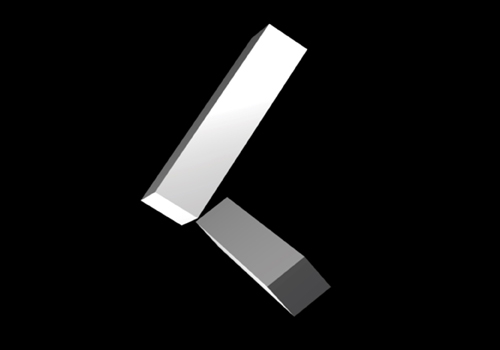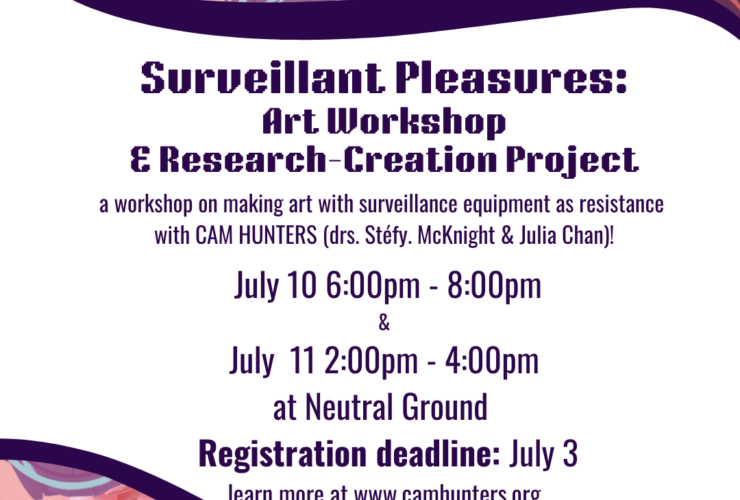Philippe Hamelin
February 13 – March 18, 2016
Philipe will be giving an artist talk at 8:30 p.m., reception to follow!
Translation will screen in the second storey windows of SOIL Media Art & Technology, Tuesday to Saturday from 5:00 p.m. to midnight, February 13th to March 18th.
Presented in partnership with Vidéographe.
About Vidéographe
VIDEOGRAPHE Fondé en 1971, Vidéographe est un centre d’artistes voué à la recherche et à la diffusion de l’image en mouvement. Engagé dans une réflexion continue sur les questions conceptuelles, formelles, politiques et technologiques posées par les pratiques expérimentales de l’image en mouvement, Vidéographe propose des initiatives pour favoriser la recherche artistique et la production de discours critique par des artistes, des commissaires et des chercheurs d’origines, de cultures, de capacités et de genres divers. Par nos activités de diffusion, nous favorisons la reconnaissance et la compréhension d’oeuvres tant actuelles qu’historiques, au Québec, au Canada et à l’étranger.
VIDEOGRAPHE Founded in 1971, Vidéographe is an artist-run centre dedicated to research and dissemination of artists’ moving images. Engaged in a continuous reflection on the conceptual, formal, political and technological issues posed by the experimental practices in the field of moving images, Vidéographe proposes initiatives to foster artistic research and production of critical discourse by artists, curators and researchers of diverse backgrounds, cultures, abilities and genders. Through our dissemination channels, we advance the recognition and understanding of both contemporary and historical works, in Quebec, Canada and abroad.
Artist Statement
Ma pratique artistique est au croisement des arts visuels, du cinéma et de la vidéo expérimentale et prend principalement la forme d’installation, de monobande vidéo et d’animation d’image de synthèse. J’observe et questionne les relations que l’humain développe avec et à travers la technologie dans son rapport au monde. Je m’intéresse à ce qui lie effets spéciaux et affects, aux corrélations entre le mouvement extérieur et intérieur du mouvoir et de l’émouvoir. J’explore les mécanismes du cinéma, les formes narratives et principalement les agencements poétiques possibles grâce au montage, qu’il soit vidéographique ou spatial. Mes projets soulignent la nature du médium numérique et explorent les frontières entre le réel et le virtuel, entre le naturel et l’artificiel.
Mon approche narrative est expérimentale, je tente de développer une grammaire vidéographique qui puisse toucher et générer des affects par ses formes et sa structure plutôt que par l’absorption du spectateur dans un récit reconnaissable et compréhensible.
Translation est le premier essai de la série SCI-FI Haïku, une série de courtes sciences-fictions minimalistes qui explorent, à travers le montage alterné, les possibilités de transfert de tension et d’association entre des séquences parallèles de nature complètement différentes. Ces études du suspense, par leur économie de moyens, se rapprochent à la forme du poème haïku qui transmet avec beaucoup d’ouverture un état ou une impression avec un minimum de mots et une découpe rythmique bien calculée. Dans Translation, le montage est rythmé par les micro tensions qui se trouvent entre les formes abstraites de l’animation de synthèse et la tension résultant de l’agitation des oiseaux en cage. Le transfert de la vie du réel au virtuel sème la menace de la rencontre de ces deux univers.
My artistic practice spans the visual arts, cinema, and experimental video and primarily takes the form of installation, single-channel video, and computer generated animation. I observe and consider the relationships human beings develop with and through technology as they interact with the world. I am interested in the links between special effects and the effects they elicit, in the correlation between exterior and interior movement—motion and emotion. I explore the mechanisms of cinema, narrative forms, and, in particular, the poetic compositions that are made possible through montage, whether videographic or spatial.
My projects expose the nature of the digital medium and explore the borders between the real and the virtual, between nature and artifice. My narrative approach is experimental; I endeavour to develop a videographic grammar that can touch and affect through its forms and structure rather than using a recognizable and understandable story to draw the viewer in.
Translation is the first essay in the SCI-FI Haïku series of short, minimalist works of science fiction that, through alternating montages, play with tension and the juxtaposition of very different parallel sequences. These studies of suspense take the form of haïku poetry, in which a state or an impression is clearly conveyed with few words and a set rhythm. In Translation, the montage is cadenced through micro tensions between computer-generated abstract forms and the agitation of caged birds. The shift from the real to the virtual infers the threat imposed by the meeting of these two worlds.
Artist Bio
PHILIPPE HAMELIN s’intéresse à ce qui lie effets spéciaux et affects. À travers le montage vidéographique ou spatial, il tente de créer des agencements poétiques entre l’humain et les médiums technologiques, tout en questionnant les relations que l’on développe avec et à travers la technologie. Ses oeuvres furent présentées en galerie de même que dans de nombreux festivals, au Canada et à l’étranger. Après des études cinématographiques à l’Université de Montréal, il a complété une maîtrise en Beaux-Arts à l’Université Concordia. Il vit à Montréal et enseigne les arts visuels et le cinéma au Cégep de l’Outaouais.
****
PHILIPPE HAMELIN explores the connection between special effects and affect. Using spatial or videomontage, he seeks to create poetic dispositions between humans and technological media, callinginto question the relations we develop with and through technology. His work has been shown in art galleries and in numerous festivals in Canada and abroad. Following studies in cinema at the Université de Montréal, he completed a master’s degree in fine arts at Concordia University. He lives in Montreal and teaches visual art and cinema at the Outaouais CEGEP.


